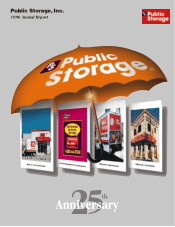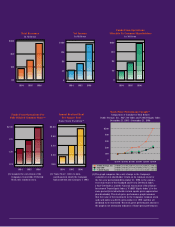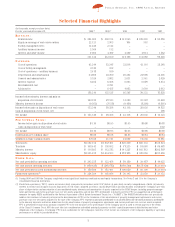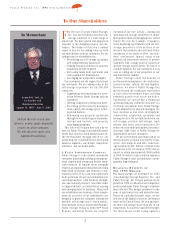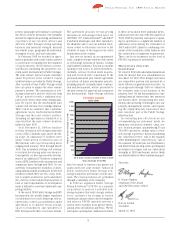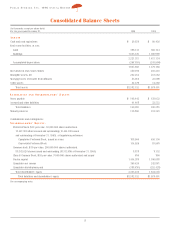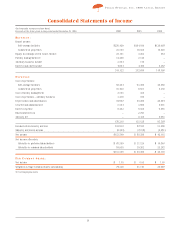Public Storage 1996 Annual Report Download - page 9
Download and view the complete annual report
Please find page 9 of the 1996 Public Storage annual report below. You can navigate through the pages in the report by either clicking on the pages listed below, or by using the keyword search tool below to find specific information within the annual report.
P
UBLIC
S
TORAGE
, I
NC
. 1996 A
NNUAL
R
EPORT
7
Sizeable, diversified customer base.
At the end of 1996, 540,000 individuals and businesses
comprised the Public Storage customer base. Our customers come from all walks of life.
The majority of our customers can be categorized as commercial, residential, military and
students. Since our customer base is broad, the Company avoids relying on a few major
tenants or upon tenants in the same or similar business. Many of the Company’s properties
are located in areas possessing growing populations and diversified economies, which often
result in strong self-storage demand. Moving, home downsizing, marriage, divorce, job
loss and attending college are some of the events that trigger an individual’s demand for
self-storage space. Commercial users such as regional salesmen, small corporations and
retailers use mini-warehouse properties to meet a multitude of record keeping and inventory
storage needs.
Enhancing our competitive edge.
The national reservation center augments
our competitive edge by continuously offering our customers new and better
services and products. We can market mini-warehouses, container storage, truck
rentals, retail stores, and our HFS preferred-vendor marketing arrangement to
customers through the national reservation center. A customer calling a property,
or our Company’s national toll-free number (1-800-44-STORE) can be connected
with the center. The center currently receives about 120,000 calls per month.
We plan to continue expanding the number of personnel staffing the reservation
center and the product and services offered through it. We believe that improving
and expanding upon our ability to increase customer demand has enabled us to
support favorable occupancy trends through the national reservation center.
Change stimulates self-storage demand.
Part of the expanding need for storage
space in many of the Company’s properties’ markets and across America is linked
to economic and social changes, such as population movement. In fact, planned
and unplanned relocation activity is one of the most important generators of self-
storage demand: 46,000 American households relocate on any given day. Many of
the Company’s properties are in locations that have about 100,000 people living
in a five-mile marketing area around the property. The average city dweller moves
every 7.5 years and will (according to the U.S. Postal Service) move 12 times in a
lifetime. Accordingly, each year about 13,000 of the 100,000 people living within
the market area of a typical Public Storage mini-warehouse may be seeking
traditional or container self-storage and move-related supplies, a demand which
the Company’s properties can accommodate.
Simple construction / low costs yet high rental rates.
Compare mini-warehouse construction costs to
apartment costs and the resulting yield per square foot. The newly constructed Lake Forrest, California
mini-warehouse featured throughout this annual report has an average per square foot rent of about
$.92 a month. Surveys indicate a typical two bedroom apartment unit (approximately 1,000 square feet) in
this property’s market area rents for about the same amount on a square foot basis. However, the costs to
construct this mini-warehouse property were, on a square foot basis, significantly less. The 10′x 10′unit
in the photo is essentially a simple box made of tilt-up concrete, corrugated steel and a reinforced roll up
door. Mini-warehouses require a low level of capital expenditure to maintain their condition and appearance.
Moreover, capital outlays are usually not required after a tenant vacates. Additionally, repricing risks are
minimized since tenancy is usually less than one year, enabling revenues to parallel current market conditions.
Maximizing Competitive Strengths

